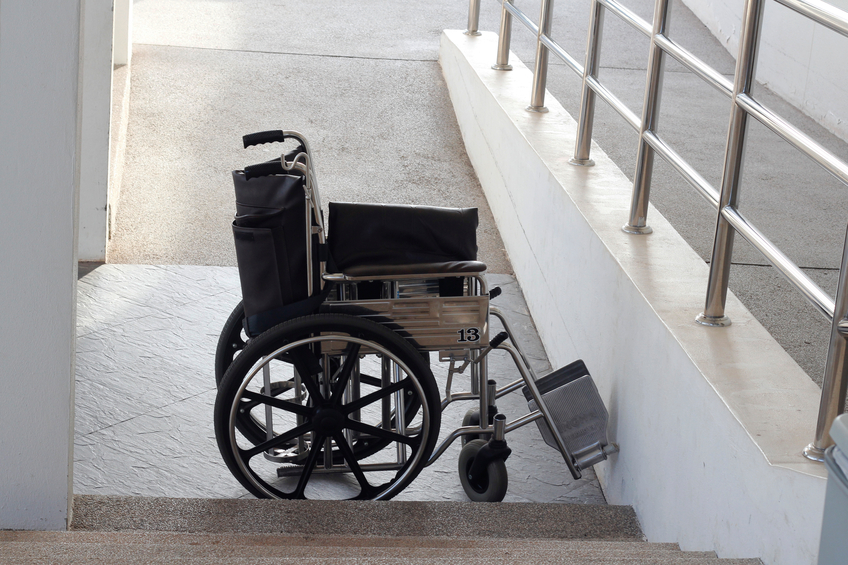Tennessee Materials & Health/Safety/Welfare 24 PDH Discount Pkg 2
Courses in this Package
Coating Types and Selection (T06-002)
Coating Application and Inspection (T03-001)
Thermal Stress and Brittle Fracture of Material (T02-001)
Public Right of Way Accessibility Guidelines (PROWAG) (C02-041)
ADA Update: A Primer for State and Local Government (A01-005)
Personal Protective Equipment (T03-003)
Controlling Electrical Hazards (E02-002)
Engineering Ethics Case Study: The Challenger Disaster (LE3-001)
Ethics in Professional Practice (LE2-007)

This online engineering PDH course presents each type of coating resin or binder categorized by its film-forming mechanism, different types of pigments, and the various solvent families. It also discusses drying oils which are an integral part of some coating formulations, as well as, driers that aid in the drying reaction. Furthermore, it describes miscellaneous additives that are formulated into many coatings for specific purposes. It also provides guidance on powder coatings, thermal spray organic and inorganic coatings, and galvanizing tapes and wraps.
This course also presents a systematic approach to coating selection for new construction and maintenance painting. It details the criteria for selecting a coating system based on the service environment(s), surface preparation requirements, and options for coating application. Finally, it discusses other considerations such as VOC concerns, coating cost, supplier recommendations, ease of application, and maintainability.
This 6 PDH online course is applicable to engineers, design and construction personnel, and other technical professionals who are interested in gaining a better understanding of coating types, characteristics and selection.
This PE continuing education course is intended to provide you with the following specific knowledge and skills:
- Familiarizing with the various types of film-forming mechanisms
- Understanding how resins (binders) are formed and their underlying pigments
- Learning about drying oil coatings and their corresponding driers
- Understanding the function of solvents in coatings
- Learning about the various additives and their purposes
- Understanding zinc-rich coatings vs. powder and their applications
- Understanding the environmental impacts of volatile organic compounds
- Understanding the process of thermal spray and galvanized coatings
- Learning about how to protect piping and tubular structural shapes with tapes and wraps
- Determining the criteria for selecting a coating system
- Understanding the degree of exposure to atmospheric elements
- Selecting coating systems for ferrous components in fresh water vs. seawater
- Selecting coating systems for black iron and steel pipes
In this professional engineering CEU course, you need to review Chapters 4 and 5 of the "Painting: New Construction and Maintenance" engineering manual, published by the United States Army of Corps of Engineers (USACE), Publication Number EM 1110-2-3400.
Upon successful completion of the quiz, print your Certificate of Completion instantly. (Note: if you are paying by check or money order, you will be able to print it after we receive your payment.) For your convenience, we will also email it to you. Please note that you can log in to your account at any time to access and print your Certificate of Completion.

This online engineering PDH course presents the technologies, techniques, advantages and limitations, equipment, typical coating types involved, and safety considerations for each type of application method.
The choice of an application method depends on the type of coating to be applied, the type and size of surface to be coated, and governing environmental regulations. There are various methods of coating application, including brush application, roller application, conventional spray, high volume-low pressure spray, airless spray, plural component spray, and electrostatic spray.
Approximately 85 percent of all premature coating failures are a result of poor surface preparation, inadequate mixing, thinning, and/or poor coating application. Onsite quality control inspection during surface preparation and coating application procedures can help prevent failures of these types. Proper inspection techniques must be combined with knowledgeable instrument use, good common sense, and thorough documentation of work activities and inspection checkpoints to help ensure specification compliance. The amount of inspection and the specific inspection checkpoints will vary with the type and size of the coating project. This course presents eleven quality control inspection procedures as follows:
- Pre-surface preparation inspection
- Ambient conditions
- Compressed air cleanliness
- Surface profile
- Surface cleanliness
- Paint storage, mixing, and thinning procedures
- Application techniques
- Wet and dry coating thickness
- Pinhole detection
- Adhesion
- Cure
This 3 PDH online course is applicable to engineers, design and construction personnel, and other technical professionals who are interested in gaining a better understanding of coating application and inspection.
This PE continuing education course is intended to provide you with the following specific knowledge and skills:
- Methods of coating application
- Documentation of coating applications
- Pre-surface preparation inspection
- Measurement of ambient conditions
- Assessment of compressed air cleanliness
- Measurement of surface profile
- Evaluation of surface cleanliness
- Paint storage, mixing, and thinning
- Measurement of wet coating thickness
- Nondestructive measurement of dry coating thickness
- Destructive measurement of dry coating thickness
- Cleanliness and time (cure) between coats
- Holiday/pinhole detection
- Adhesion testing and evaluation
In this professional engineering CEU course, you need to review Chapters 8 and 9 of the “Painting: New Construction and Maintenance” engineering manual, published by the United States Army of Corps of Engineers (USACE), Publication Number EM 1110-2-3400.
Upon successful completion of the quiz, print your Certificate of Completion instantly. (Note: if you are paying by check or money order, you will be able to print it after we receive your payment.) For your convenience, we will also email it to you. Please note that you can log in to your account at any time to access and print your Certificate of Completion.

This online engineering PDH course addresses the effects of thermal stress and thermal shock on a system. It explains how thermal stress and shock combined with pressure can cause major damage to components. This course also addresses ductile and brittle fracture. It describes how ductile and brittle fractures are affected by the minimum pressurization and temperature curves. It also explains the reason why heatup and cooldown rate limits are used when heating up or cooling down a system.
This 2 PDH online course is applicable to structural and mechanical engineers, construction and personnel, technical staff and facility operators who are interested in gaining a better understanding of thermal stress and brittle fracture of materials.
This PE continuing education course is intended to provide you with the following specific knowledge and skills:
- Thermal stress
- Pressurized thermal shock
- Brittle fracture mechanism
- Minimum pressurization-temperature curves
- Heatup and cooldown rate limits
In this professional engineering CEU course, you need to review Modules 3 and 4, "Thermal Stress and Brittle Fracture" of the Department of Energy Publication DOE-HDBK-1017/1-93, "Material Science".
Upon successful completion of the quiz, print your Certificate of Completion instantly. (Note: if you are paying by check or money order, you will be able to print it after we receive your payment.) For your convenience, we will also email it to you. Please note that you can log in to your account at any time to access and print your Certificate of Completion.

This online engineering PDH course presents the main requirements for
This 2 PDH online course is applicable to civil engineers, construction managers, architects and inspectors who are involved with construction in the public right of way.
This PE continuing education course is intended to provide you with the following specific knowledge and skills:
- Familiarizing with the government agencies involved with PROWAG
- Understanding which projects require PROWAG compliance
- Knowing the differences between the current ADA requirements and PROWAG
- Learning about PROWAG sidewalk and slope requirements
- Learning about PROWAG curb ramp requirements
- Learning about PROWAG detectable warning requirements
- Understanding practical examples of reconstructing existing conditions to be PROWAG compliant
In this professional engineering CEU course you will review the main requirements of PROWAG along with practical design examples.
Upon successful completion of the quiz, print your Certificate of Completion instantly. (Note: if you are paying by check or money order, you will be able to print it after we receive your payment.) For your convenience, we will also email it to you. Please note that you can log in to your account at any time to access and print your Certificate of Completion.

This online engineering PDH course provides general guidance to assist State and local governments in understanding and complying with current Americans with Disabilities Act (ADA) requirements.
The Department of Justice revised its regulations implementing the ADA in September 2010. The new rules clarify issues that arose over the previous 20 years and contain new requirements, including the 2010 ADA Standards for Accessible Design (2010 Standards).
This 1 PDH online course is intended for engineers employed by State or local governments.
This PE continuing education course is intended to provide you with the following specific knowledge and skills:
- Knowing who is protected under the ADA
- Understanding people’s responsibilities under the ADA
- Understanding the general non-discrimination requirements
- Learning how to make the built environment accessible
- Understanding the use of ADA coordinators, grievance procedures and self-evaluation plans
In this professional engineering CEU course, you need to review the course document titled, “ADA Update: A Primer for State and Local Government,” June, 2015.
Once you complete your course review, you need to take a multiple-choice quiz consisting of ten (10) questions to earn 1 PDH credit. The quiz will be based on this ADA publication.
Upon successful completion of the quiz, print your Certificate of Completion instantly. (Note: if you are paying by check or money order, you will be able to print it after we receive your payment.) For your convenience, we will also email it to you. Please note that you can log in to your account at any time to access and print your Certificate of Completion.

This online engineering PDH course addesses Personal Protective Equipment (PPE) types, selection and training, as well as conducting a hazard assessment of the workplace.
Hazards exist in every workplace in many different scenarios: sharp edges, falling objects, flying sparks, chemicals, noise and a myriad of other potentially dangerous situations. Controlling a hazard at its source is the best way to protect employees. Depending on the hazard or workplace conditions, OSHA recommends the use of engineering or work practice controls to manage or eliminate hazards to the greatest extent possible. Therefore, OSHA developed the Personal Protection Equipment Standard to protect employees from workplace hazards that can cause injury.
This 3 PDH online course is applicable to all engineers, employers, building owners, facility managers, and all personnel working on construction projects.
This PE continuing education course is intended to provide you with the following specific knowledge and skills:
- Understanding the types of personal protective equipment (PPE)
- Knowing the basics of conducting a "hazard assessment" of the workplace
- Selecting the appropriate PPE for a variety of circumstances
- Understanding what kind of training is needed for the proper use and care of PPE
In this professional engineering CEU course, you need to review OSHA 3151-12R, "Personal Protective Equipment".
Upon successful completion of the quiz, print your Certificate of Completion instantly. (Note: if you are paying by check or money order, you will be able to print it after we receive your payment.) For your convenience, we will also email it to you. Please note that you can log in to your account at any time to access and print your Certificate of Completion.

This online engineering PDH course provides OSHA guidance on controlling electrical hazards for protecting workers from exposure to electrical hazards.
Electricity has been long recognized as a serious workplace hazed, exposing employees to electric shock, electrocution, burns, fires and explosions. According to the Bureau of Labor Statistics, many workers have died from electrocutions at work, accounting for as many as 5% of all on-the-job-fatalities in a given year. What makes these statistics more tragic is that most of these fatalities could have been easily avoided.
OSHA recognizes that electrical hazards present serious hazards to all workers involved. Therefore, OSHA developed several standards for Controlling Electrical Hazards to protect employees working in the construction industry from exposure to electrical hazards.
This 2 PDH online course is applicable to employers, building owners, engineers, electricians, managers, construction workers and any other personnel working on construction projects that involve exposure to electrical hazards.
This PE continuing education course is intended to provide you with the following specific knowledge and skills:
- What affects the flow of electricity
- What is the cause of shocks and their effect on the body
- How to react if someone "freezes" to a live electrical contact
- How to protect yourself against electrical hazards
- What protection does insulation provide
- What are the different types of insulation
- What are circuit protection devices
- What work practices help protect you from electrical hazards
- What role do tools play
- Employee training
In this professional engineering CEU course, you need to review OSHA 3075, "Controlling Electrical Hazards".
Upon successful completion of the quiz, print your Certificate of Completion instantly. (Note: if you are paying by check or money order, you will be able to print it after we receive your payment.) For your convenience, we will also email it to you. Please note that you can log in to your account at any time to access and print your Certificate of Completion.

This online engieering PDH course provides instruction in engineering ethics through a case study of the Space Shuttle Challenger disaster. The minimum technical details needed to understand the physical cause of the Shuttle failure are presented. The disaster itself is chronicled through NASA photographs. Next the decision-making process, especially the discussions occurring during the teleconference held on the evening before the launch, is described. Direct quotations from engineers interviewed after the disaster are used to illustrate the ambiguities of the data and the pressures that the decision-makers faced in the months and hours preceding the launch. The course culminates in an extended treatment of six ethical issues raised by Challenger.
This 3 PDH online course is intended for all engineers who are interested in gaining a better understanding about the ethical issues that lead to the Challenger disaster and how they could have been avoided.
This PE continuing education course is intended to provide you with the following specific knowledge and skills:
- Common errors to avoid in studying the history of an engineering failure: the retrospective fallacy and the myth of perfect engineering practice
- Shuttle hardware involved in the disaster
- Decisions made in the period preceding the launch
- Ethical issue: NASA giving first priority to public safety over other concerns
- Ethical issue: the contractor giving first priority to public safety over other concerns
- Ethical issue: whistle blowing
- Ethical issue: informed consent
- Ethical issue: ownership of company records
- Ethical issue: how the public perceives that an engineering decision involves an ethical violation
In this professional engineering CEU course, you need to review the course document titled, "Engineering Ethics Case Study: The Challenger Disaster".
Upon successful completion of the quiz, print your Certificate of Completion instantly. (Note: if you are paying by check or money order, you will be able to print it after we receive your payment.) For your convenience, we will also email it to you. Please note that you can log in to your account at any time to access and print your Certificate of Completion.

In this online engineering PDH course, background on the philosophical models that guide ethical behavior is discussed and then applied to specific situations in engineering codes of ethics. This course is based on the American Society of Mechanical Engineers Professional Practice Curriculum, Volume 8, Section: Engineering Ethics.
Many engineering organizations have drafted codes of ethics to which their members are required to commit. Generally, these codes are quite similar and are based on a few fundamental principles which provide guidance to professional engineers in common situations. Nevertheless, there are many difficult or ambiguous situations in which the best ethical solution is difficult to determine.
This 2 PDH online course is intended primarily for engineers seeking to learn ethical principles and how to apply them to their professional practice.
This PE continuing education course is intended to provide you with the following specific knowledge and skills:
-
Determining ethical behavior using several philosophical models
-
Evaluating a practical situation in terms of a professional code of ethics
-
Identifying situations that represent conflicts of interest and formulate a proper response
-
Applying the standards of professional ethics in technical communication
-
Recognizing environmental impacts of engineering work
-
Considering principles of sustainable development in the performance of professional duties
In this professional engineering CEU course, you need to review "Ethics in Professional Practice" published by the American Society of Mechanical Engineers (ASME). (This course document is reproduced by permission of the ASME (www.asme.org). You may also download from or view this course document on the ASME's website by clicking on Ethics in Professional Practice).
Once you complete your course review, you need to take a multiple-choice quiz consisting of fifteen (15) questions to earn 2 PDH credit. The quiz will be based on this ASME publication.
Upon successful completion of the quiz, print your Certificate of Completion instantly. (Note: if you are paying by check or money order, you will be able to print it after we receive your payment.) For your convenience, we will also email it to you. Please note that you can log in to your account at any time to access and print your Certificate of Completion.